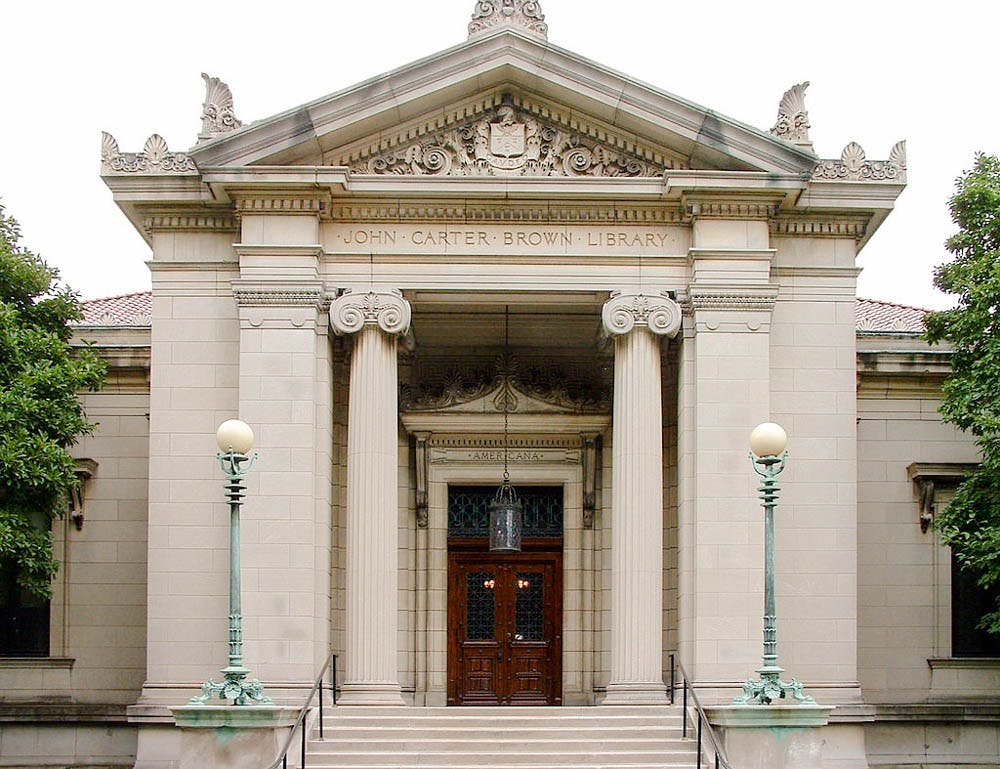On Saturday morning, the John Carter Brown Library held an exhibition and a faculty-led panel on Latin American colonial history. The artifacts exhibited part of the “Global Americana” collection, a series of works written about innovations, discoveries and observations made about the New World during the age of exploration. Library staff hoped that families would understand the various resources accessible to their students through the lecture, said Neil Safier, director of the JCB.
Prior to the gallery opening, the library hosted a panel featuring Assistant Professor of Archaeology and the Ancient World Felipe Rojas Silva, Associate Professor of History Robert Cope and Assistant Professor of History Emily Owens. They discussed the value and limitations of historical artifacts and writings for evaluating histories, focusing on the professors’ experiences with their undergraduate classes.
Owens, in particular, expressed her appreciation for primary sources. They force her students to think about and determine the voice and audience of a piece of writing and how those factors affect its message, she said. The goal of her first-year seminar was not to teach history but how to “think like a historian,” Owens added.
Rojas Silva was more wary in his assessment of the value of primary sources. He claimed that even artifacts dating back hundreds of years could be forged, though counterfeits themselves could offer a perspective about cultural values of the time. Especially in a setting of discovery and exploration, timelines and points of view can be inconsistent and hard to follow, Cope added.
After the panel, students and parents were invited to explore the collection, which included a variety of maps, books and charts representing the cross-cultural understandings and colonial experiences of the time. Among the works present were a table of death records, a counterfeit Galileo and a small book that supposedly belonged to a child studying early colonial history a century ago.
In one short passage, the captain Francisco Xavier Ribeiro Sampaio described his first experiences seeing, touching and tasting pineapple, which was the “most beautiful fruit I have seen in all the world … beauty of aspect, sweetness of scent, excellent taste,” as he described in a travel journal. Other indigenous foods described included the potato, the cacao bean and vanilla.
The exhibition also featured meticulously documented medical techniques of the era. This included a diagram of an intestinal tract surgery, which is presumed to be the first anatomical engraving in America.
Perhaps the most representative of the sociological dynamics of the era was “A Letter to Philo Africanus upon slavery,” a letter by Candidus arguing for the continuation of slavery and its benefits. Written at the time of Somerset v. Stewart, a landmark case in the abolitionist movement that ruled that chattel slavery could not be supported by English common law, the letter sought to repair the foundation of slavery after it was shaken by the controversial ruling. This, among other pieces that mention integration of Western and European cultures — such as a Portuguese play about exploration that featured the Tupi language — are physical evidence of the Americas’ complicated and diverse past.
The exhibit and panel was attended by students and their parents during Family Weekend. Diana Thompson, a family member visiting for the weekend, said that the pieces regarding medicine and the environment interested her most, and she appreciated that the University provides students with access to such articles.





